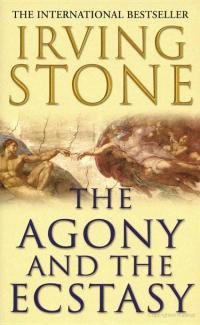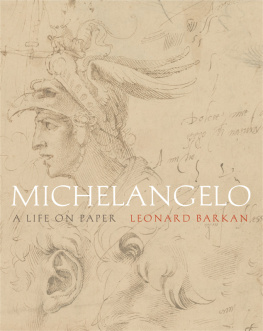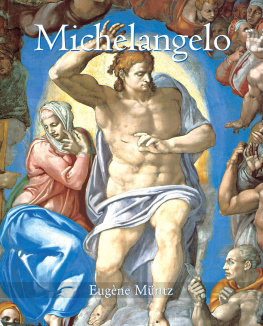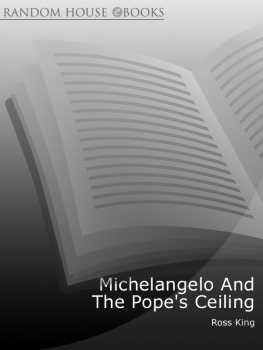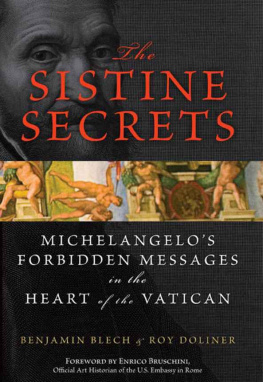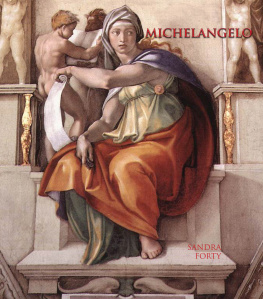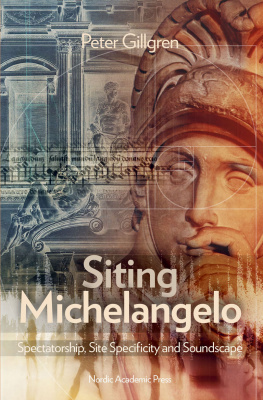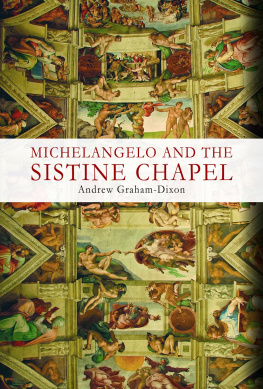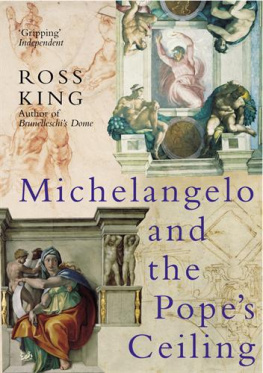Irving Stoun - The Agony and the Ecstasy
Here you can read online Irving Stoun - The Agony and the Ecstasy full text of the book (entire story) in english for free. Download pdf and epub, get meaning, cover and reviews about this ebook. year: 1961, publisher: Signet, genre: Prose / Non-fiction. Description of the work, (preface) as well as reviews are available. Best literature library LitArk.com created for fans of good reading and offers a wide selection of genres:
Romance novel
Science fiction
Adventure
Detective
Science
History
Home and family
Prose
Art
Politics
Computer
Non-fiction
Religion
Business
Children
Humor
Choose a favorite category and find really read worthwhile books. Enjoy immersion in the world of imagination, feel the emotions of the characters or learn something new for yourself, make an fascinating discovery.
- Book:The Agony and the Ecstasy
- Author:
- Publisher:Signet
- Genre:
- Year:1961
- ISBN:9780451126436
- Rating:4 / 5
- Favourites:Add to favourites
- Your mark:
- 80
- 1
- 2
- 3
- 4
- 5
The Agony and the Ecstasy: summary, description and annotation
We offer to read an annotation, description, summary or preface (depends on what the author of the book "The Agony and the Ecstasy" wrote himself). If you haven't found the necessary information about the book — write in the comments, we will try to find it.
The Agony and the Ecstasy — read online for free the complete book (whole text) full work
Below is the text of the book, divided by pages. System saving the place of the last page read, allows you to conveniently read the book "The Agony and the Ecstasy" online for free, without having to search again every time where you left off. Put a bookmark, and you can go to the page where you finished reading at any time.
Font size:
Interval:
Bookmark:
THE AGONY AND THE ECSTASY
He returned to the Sistine to look at the vault with sharper eyes. The architectural structure did not accommodate his new vision. He needed a new vault, a completely different ceiling which would appear to have been constructed solely for the purpose of showing his frescoes to their best advantage. But he knew better than to return to the Pope and ask for a million ducats to tear down brick, plaster, soldiers' rooms above, solid roof beyond. Serving as his own architect, he would have to rebuild that tremendous vault with the sole material available to him: paint.
Through sheer invention he must transform the ceiling, utilizing its shortcomings even as he had the gouge in the Duccio block, to force his creative powers into channels they might not otherwise have taken. Either he was the stronger, and could displace this vault space, or the force of the vault to resist would crush him.
He was determined to get a teeming humanity up on the ceiling, as well as God Almighty who created it; mankind portrayed in its breathless beauty, its weaknesses, its indestructible strengths: God in His ability to make all things possible. He must project a throbbing, meaningful vitality that would invert the universe: the vault would become the reality, the world of those looking at it would become illusion.
Also available
by the same author
Lust for Life
Depths of Glory
IRVING STONE
The Agony
and The Ecstasy
Reprinted in Arrow Books 1997
19 20 18
Copyright Doubleday & Company Inc. 1961
The right of Irving Stone to be identified as the author of this work has been asserted by him in accordance with the Copyright, Designs and Patents Act, 1988.
This book is sold subject to the condition that it shall not, by way of trade or otherwise, be lent, resold, hired out, or otherwise circulated without the publisher's prior consent in any form of binding or cover other than that in which it is published and without a similar condition including this condition being imposed on the subsequent purchaser First published in the United Kingdom in 1961 by William Collins Sons & Company Methuen London edition published in 1987
This edition first published in 1989 by Mandarin Paperbacks, reprinted 15 times The eighteen lines from Ovid's Metamorphoses, translated by Horace Gregory, are reprinted by permission of the publisher. Copyright 1958 by The Viking Press Inc.
The forty-five lines from Dante's Divine Comedy, translated by Lawrence Grant White, are reprinted by permission of the publisher. Copyright 1948 by Pantheon Books.
Arrow Books Limited
Random House UK Limited
20 Vauxhall Bridge Road, London SW1V 2SA
Random House Australia (Pty) Limited
20 Alfred Street, Milsons Point, Sydney, New South Wales 2061, Australia Random House New Zealand Limited 18 Poland Road, Glenfield, Auckland 10, New Zealand Random House South Africa (Pty) Limited
Endulini, 5a Jubilee Road, Parktown 2193, South Africa Random House UK Limited Reg. No. 954009
A CIP catalogue record for this book is available from the British Library Papers used by Random House UK Limited are natural, recyclable products made from wood grown in sustainable forests. The manufacturing processes conform to the environmental regulations of the country of origin Printed and bound in Great Britain by Cox & Wyman Ltd, Reading, Berkshire ISBN 0 7493 0175 9
THE BOOKS
One:
THE STUDIO
7
Two:
THE SCULPTURE GARDEN
63
Three:
THE PALACE
104
Four:
THE FLIGHT
188
Five:
THE CITY
278
Six:
THE GIANT
360
Seven:
THE POPE
456
Eight:
THE MEDICI
550
Nine:
THE WAR
613
Ten:
LOVE
668
Eleven:
THE DOME
715
The interested reader will find a bibliography at the back of the book, as well as acknowledgments to the Michelangelo scholars, a glossary, and a listing of places where Michelangelo's works are to be found today.
THE LOVER AND THE SCULPTOR
The best of artists hath no thought to showwhich the rough stone in its superfluous shelldoth not include; to break the marble spellis all the hand that serves the brain can do.
THE ARTIST AND HIS WORK
How can that be, lady, which all men learnby long experience? Shapes that seem alive,wrought in hard mountain marble, will survivetheir maker, whom the years to dust return!
BEAUTY AND THE ARTIST
Beauteous art, brought with us from heaven,will conquer nature; so divine a power
belongs to him who strives with every nerve.
If I was made for art, from childhood givena prey for burning beauty to devour,
I blame the mistress I was born to serve.
MICHELANGELO BUONARROTI
B O O K O N E :
The Studio
He sat before the mirror of the second-floor bedroom sketching his lean cheeks with their high bone ridges, the flat broad forehead, and ears too far back on the head, the dark hair curling forward in thatches, the amber-colored eyes wide-set but heavy-lidded.
"I'm not well designed," thought the thirteen-year-old with serious concentration. "My head is out of rule, with the forehead overweighing my mouth and chin. Someone should have used a plumb line."
He shifted his wiry body lightly so as not to waken his four brothers sleeping behind him, then cocked an ear toward the Via dell'Anguillara to catch the whistle of his friend Granacci. With rapid strokes of the crayon he began redrafting his features, widening the oval of the eyes, rounding the forehead, broadening the narrow cheeks, making the lips fuller, the chin larger. "There," he thought, "now I look better. Too bad a face can't be redrawn before it's delivered, like plans for the faade of the Duomo."
Notes of a bird's song came fluting through the ten-foot window, which he had opened to the cool morning air. He hid his drawing paper under the bolster at the head of his bed and went noiselessly down the circular stone stairs to the street.
His friend Francesco Granacci was a nineteen-year-old youth, a head taller than himself, with hay-colored hair and alert blue eyes. For a year Granacci had been providing him drawing materials and sanctuary in his parents' home across the Via dei Bentaccordi, as well as prints borrowed surreptitiously from Ghirlandaio's studio. Though the son of a wealthy family, Granacci had been apprenticed to Filippino Lippi at the age of ten, at thirteen had posed as the central figure of the resurrected youth in St.
Peter Raising the Emperor's Nephew, in the Carmine, which Masaccio had left uncompleted, and was now apprenticed to Ghirlandaio. Granacci did not take his own painting seriously, but he had a sharp eye for talent in others.
"You're really coming with me this time?" Granacci demanded excitedly.
"It's my birthday present to myself."
"Good." He took the younger boy's arm, guiding him along the curving Via dei Bentaccordi which had been built on the oval site of the old Roman colosseum, past the high walls of the prison of the Stinche. "Remember what I told you about Domenico Ghirlandaio. I've been apprenticed to him for five years, and I know him well. Be humble. He likes his apprentices to appreciate him."
By now they had turned into the Via Ghibellina, just above the Ghibellina gate which marked the limits of the second wall of the city. On their left they passed the magnificent stone pile of the Bargello, with its colorful governor's courtyard, and then, after they had turned right on the Street of the Proconsul, the Pazzi palace. The younger boy ran his hand lovingly over the irregular roughhewn blocks of its walls.
Next pageFont size:
Interval:
Bookmark:
Similar books «The Agony and the Ecstasy»
Look at similar books to The Agony and the Ecstasy. We have selected literature similar in name and meaning in the hope of providing readers with more options to find new, interesting, not yet read works.
Discussion, reviews of the book The Agony and the Ecstasy and just readers' own opinions. Leave your comments, write what you think about the work, its meaning or the main characters. Specify what exactly you liked and what you didn't like, and why you think so.

